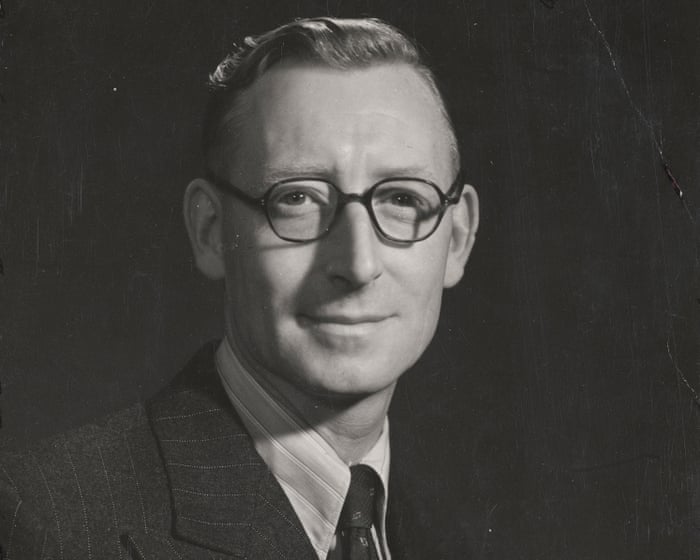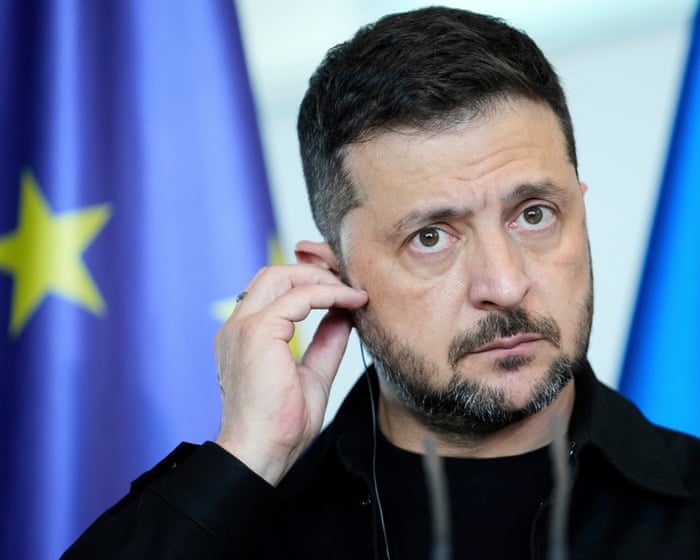You know this story, right? It’s early in the war, and Western Europe has fallen. Only the English Channel stands between Britain and the grip of fascism, while the Atlantic shipping routes are the only hope for keeping the population fed, clothed, and armed. But Nazi U-boats, hunting in “wolf packs,” are freely targeting merchant ships, coordinated by radio messages that the British can intercept but not decode, all because of the complex Enigma encryption machine. Unless something is done—and quickly—Hitler’s plan to first bomb and then starve the country will succeed. Enter Alan Turing, a genius working as a codebreaker at the top-secret Government Code and Cypher School at Bletchley Park. In a remarkable display of intellectual skill, he designs and builds the world’s first computer to crack Enigma, neutralizing the U-boats and helping to win the war. That’s why Turing is called the father of computing.
It’s a compelling story, but like many great tales, it’s far from accurate. The world’s first digital electronic computer, the precursor to today’s machines, was indeed built in Britain to revolutionize codebreaking during World War II—an incredible feat of innovation—but Turing wasn’t even in the country at the time. It wasn’t the brainchild of the mostly private school and Oxbridge-educated experts at Bletchley Park either. Instead, the machine known as Colossus was invented by Tommy Flowers, a Post Office engineer without a degree and the son of a cockney bricklayer. For decades, he was barred by the Official Secrets Act from revealing his achievement. Now, as his 120th birthday approaches and with the Tommy Flowers Foundation working to correct this historical oversight, he’s finally getting recognition, starting with a mural by artist Jimmy C (famous for the David Bowie mural in Brixton, London) at the National Museum of Computing.
Here’s the story you didn’t see in the movies.
On a sunny weekday in August, Bletchley Park is serene: a grand estate beside a lake where codebreakers used to skate in winter between tackling the ever-changing array of electromechanical encryption machines used by the Third Reich’s leaders. To the right of the main house stands a cluster of concrete huts that look grim, as one female codebreaker noted upon arrival, yet they still seem to hold a palpable atmosphere. Visitors often speak quietly here, as if afraid to disturb the brilliant minds that once worked in these halls. Stephen Fry once said, “Just saying the name Bletchley Park gives me goosebumps.” Clearly, he’s not alone.
In the visitors’ center cafe, David Kenyon, one of the Park’s historians, explains why the peaceful scene today needs context. The popular image of Bletchley Park as a quirky, non-military hub for eccentric geniuses might have been true at first, he says. But by late 1943, after many codebreaking breakthroughs, it had evolved into a full-scale intelligence factory supporting the entire Allied war effort. The huts where Turing and other cryptographers originally worked were repurposed for minor administrative tasks, while advanced codebreaking machines buzzed and hummed in large, lettered blocks built around a communications center behind the mansion, all connected by mechanical conveyors and vacuum tube systems. At its peak, over 10,000 people worked here in three eight-hour shifts, maintaining remarkable secrecy. Three-quarters of them were women, with an average age between 20 and 22.
Codebreakers at Bletchley Park in 1943. Photograph: Science Museum Photo Studio/Bletchley Park Trust/Science Museum Group
“Substitution ciphers,” like those the Nazis used, have been around for at least two millennia.The earliest known use of encryption dates back to Julius Caesar, who described in his book Gallic Wars how he sent a coded message to his besieged general Cicero by replacing Roman letters with Greek ones. This method later inspired the famous Caesar cipher, which shifts each letter of a message—the plaintext—by a fixed number of positions in the alphabet.
Substitution ciphers, however, have clear weaknesses that an enemy can exploit. For example, if a codebreaker recognizes a common phrase like “Heil Hitler” at the end of a message, it can reveal the cipher’s pattern. Frequent or rare letters, or those that often appear together in the encrypted text, can also provide clues based on language patterns. For two thousand years, cryptography has been a battle of wits between code makers and code breakers.
By the time the Enigma machine was developed—about the size of a typewriter—it used three rotor wheels, similar to the dials on a combination lock, to scramble plaintext messages. But while a combination lock has only 10 possible positions (0–9), each Enigma rotor had 26, one for each letter of the alphabet. The real complexity came from the fact that each letter triggered a different substitution alphabet—so in one position, “b” might become “f,” and in another, “q.” Moreover, with every letter typed, at least one rotor turned, constantly changing the substitution alphabet and obscuring the patterns codebreakers relied on.
He deserves to be remembered alongside computing pioneers like Bill Gates and Steve Jobs and should have earned comparable wealth.
The British first learned of Enigma in 1921 when its manufacturer tried to sell it to them. Dillwyn “Dilly” Knox, a brilliant codebreaker rumored to have been a lover of John Maynard Keynes at Eton and later a close colleague of Turing at Bletchley Park, brought one back from Vienna in 1926 for testing. They discovered minor but significant vulnerabilities and rejected it. By 1939, with war breaking out, a gifted Polish mathematician named Marian Rejewski had broken Enigma by hand using paper and pencil. He and his colleagues then designed a machine called the Bomba to speed up the process. One of Turing’s many brilliant achievements was cracking the more complex naval Enigma, which had been enabling U-boat wolf packs to wreak havoc in the North Atlantic. He also designed his own machine, the Bombe, named in honor of the Polish invention but far more advanced. The importance of these contributions cannot be overstated, yet even greater challenges awaited, leading to an unforeseen crisis. Enter Tommy Flowers.
By June 1941, most of the work on Enigma was complete. That month, however, “Y Service” eavesdroppers in Knockholt, Kent, intercepted a Nazi message encrypted in an unfamiliar way. Unlike Enigma, which used Morse code, this message was in teleprinter code, where each letter was represented by a five-digit binary number. For example, “G” was 01011, equivalent to the decimal number 11. Each character’s binary code was transmitted as rapid pulses and silences, much like a 1990s modem.
A teleprinter machine took input from a standard keyboard, converted it into a stream of these five-digit binary numbers, and transmitted it. An identical machine at the receiving end printed the message on ticker tape, punching a hole for “1” and leaving a blank for “0.” Each horizontal line on the tape represented a specific character, with a small sprocket hole in the middle to guide it through the machine.
This mysterious device was tested for 16 months until October 1942, then disappeared. British codebreakers hoped it had been abandoned, but it soon reappeared on a line between Berlin and Salonika in occupied Greece—this time for good. Soon, this unseen “ghost machine” was scrambling wartime communications.The Tunny machine encrypted communications between Hitler, his high command, and field commanders—intelligence of the utmost importance. Following the British tradition of naming intercepted messages after fish, this new device was nicknamed “Tunny,” short for tuna.
Colossus, the revolutionary computer created by Tommy Flowers, is shown here at Bletchley Park in the 1940s.
Known to the Germans as the Lorenz SZ40, Tunny was about the size of a laser printer and far more advanced than Enigma. It connected directly to a teleprinter and used 12 wheels—each with a varying number of positions, from 23 to 61 (all prime numbers). Like Enigma, the receiving operator needed to know the starting positions of each wheel, which Bletchley Park called the “wheel settings.” Additionally, the internal wiring of each wheel could be altered using small pins, effectively changing the machine’s configuration—referred to by BP as “wheel patterns.”
For a year, the Research Section at Bletchley struggled against Tunny. Initially, their only hope of cracking it depended on enemy mistakes. On August 30, 1941, an operator broke protocol by sending the same message twice without changing the wheel settings. Minor errors in the second transmission allowed veteran codebreaker John Tiltman to decode 4,000 characters and deduce the wheel patterns, which were changed monthly at that time. However, months later, Nazi high command tightened security, locking the codebreakers out once again.
This deadlock lasted another year until Bill Tutte, a 25-year-old mathematician who had originally trained as a chemist, achieved one of the war’s most remarkable intellectual feats. Building on an insight from Alan Turing that had helped break wheel patterns, Tutte developed a formula to uncover the crucial wheel settings—enough to decrypt any message. But there was a catch: applying Tutte’s formula manually to a Tunny cipher would take over a century per message. With Tunny traffic still inaccessible except in rare cases of operator error, the codebreakers’ frustration grew.
Early codebreakers had included few mathematicians, who were considered too abstract and eccentric to trust. Turing’s breakthroughs helped change that perception, along with his reputation for original thinking and a quirky, infectious sense of humor, as noted by colleague Peter Hilton. One beneficiary of this shift was Max Newman, a Cambridge academic who found the tedious pencil-and-paper work dull and was about to return to university when Tunny pulled him back in.
If you asked for a stereotypical image of a brainy academic and received a photo of Newman, you might send it back for being too clichéd: round glasses, unruly hair, and an oversized brain seemingly fighting for space. In a 1930s lecture series, Newman had speculated whether difficult math problems could one day be automated. He didn’t specify how, but one of his students—Alan Turing—did, in his now-famous paper “On Computable Numbers.” This work is the true reason Turing is regarded as the father of computing.
Alan Turing was so impressed with Tommy Flowers that he recruited him to assist with codebreaking at Bletchley Park.
Newman designed a machine to apply Tutte’s formula for cracking Tunny’s wheel settings. Though not a computer in the modern sense, it had the advantage of being relatively quick to build. Bletchley Park staff nicknamed it “Heath Robinson” for its makeshift appearance. It worked, but with significant issues—not least its reliance on two teleprinter tape loops: one carrying the binary ciphertext to be decoded, and the other containing Tunny’s…The device used already decrypted wheel patterns that needed to remain perfectly synchronized, but they were prone to stretching, wearing out, and breaking. It was also slow and not entirely reliable. When the team constructing it encountered problems, Turing recommended they consult an engineer he had previously worked with and admired. That engineer was Tommy Flowers.
Flowers was born in 1905 in Poplar, East London, the son of a master bricklayer. At age 12, he earned a scholarship to a local technical college and later began an apprenticeship at the Royal Arsenal in Woolwich, known for its precision mechanical engineering. Over four years, he acquired various design and manufacturing skills but realized mechanical engineering wasn’t his passion. What truly excited him was electricity.
During the postwar economic slump of the 1920s, the Post Office was one of the few organizations hiring. It was then responsible for mail and telecommunications and was undertaking an ambitious project to replace manual telephone exchanges with automatic ones. Flowers joined in 1926 and quickly gained a reputation as an innovative thinker. By the time Turing sought his help, Flowers was leading switching research at the Post Office’s Dollis Hill Research Station in North London.
There is less publicly available information about Flowers compared to others in this story. However, his 82-year-old niece, Bridget Young, speaking from Washington DC, shares details about his life before Bletchley Park. Young went to live with her uncle at 15 after her father and disabled mother—Flowers’ sister, to whom he was very close—died in a car accident. This wasn’t his first family tragedy; he was only 25 when his father died suddenly from a stroke, leaving him to care for his two sisters and mother, as there were no pensions or social safety nets at the time. Then, one night in October 1940, while he was engaged in war work at Dollis Hill, he learned that a bomb had struck the family home, killing his mother and youngest sister. He had to identify their bodies, just as he later would for Young’s parents. For him, the fight against the German Tunny cipher was deeply personal.
Despite these hardships, Young remembers Flowers as warm, playful, and curious. He was a lifelong Labour voter, like many working-class people then, and never took his educational opportunities for granted. She reads from a monograph he wrote, where he expressed concern about the lack of opportunities for working-class children. Attending university never crossed his mind; instead, he wrote, “I had to achieve a university-level education by studying on my own time without actually attending.”
According to Young, Flowers always remained connected to his East End roots. In retirement, when he was on a waiting list for a hip replacement, she offered to pay for private surgery—not because he couldn’t afford it, but to encourage him to act sooner. She recalls him saying, “No, ducks, if my number hasn’t come up, it must be because there are people who need it more than me.” Ironically, it turned out that the health authority’s computer had accidentally removed him from the list.
When I told…When he was told there would be a book revealing the full story, he seemed interested but remarked, “It’s too late.”
Working from his lab at Dollis Hill and visiting Bletchley Park as necessary, Flowers enhanced Newman’s design for the Heath Robinson machine and supervised its production, yet he still viewed it as inadequate. In February 1943, he responded by astonishing the experts with a proposal for a fully electronic digital machine that would use thermionic valves as switches to handle binary calculations. Valves, which resemble small tubular lightbulbs and are now commonly seen in guitar amplifiers and high-end audio systems, were widely known in the 1940s from radios and had a reputation for frequent failure. However, Flowers, having advanced their use in automatic telephone exchanges, knew they were highly reliable if kept powered on.
The concept of using valves as switches in a digital system was so innovative that Flowers might have been the only person in Britain who could envision it—and recognize that they would be millions of times faster than the electromechanical switches Newman employed. He had already constructed a prototype digital memory unit for the Post Office, a remarkable achievement. Despite this, Flowers later described the reaction at Bletchley Park as one of disbelief. No one had ever considered a machine like the one he proposed, which used 1,600 valves for digital calculations. A procurement officer even joked, “What, are you going to throw them at the Germans?” Just as mathematicians were initially overlooked in favor of humanities scholars, practical engineering was often dismissed as mere “trade.” Newman wished him well but continued with the more practical Heath Robinson.
Turing was different, as he valued both creation and theory. He supported Flowers and offered advice on the machine’s logic, but he couldn’t contribute more because he was due to travel to the U.S. to help set up a group of American-built Bombes as a Bletchley Park extension in Washington, D.C.
Flowers left feeling misunderstood by the Bletchley team. Fortunately, his supervisor at Dollis Hill understood and provided him with the Research Station’s resources. He assembled a dedicated team of about 50 skilled telephone engineers and wiremen from across the country, most in their early twenties. Although few knew the purpose of their work, the demanding six-to-seven-day workweeks made it clear it was crucial. At one point, a barber was hired on-site to minimize time away from the building.
After ten months of nonstop work, Colossus was completed. It weighed a ton and filled an entire room. Unlike Heath Robinson, which used two tapes, Flowers’ machine allowed Tunny wheel patterns to be programmed via plugboards and switches. He had initially planned to digitize the Tunny ciphertext as well, but this was considered impractical for long messages, so it remained on tape as patterns of holes and spaces representing five-bit binary numbers. The tape’s sprocket holes, typically used to advance the tape, synchronized the entire machine like the “clock” in a modern computer. In essence, Flowers and his team of young Post Office engineers had created the world’s first special-purpose electronic digital computer.
The prototype was delivered to Bletchley Park in a Post Office truck on January 18th, assembled by Flowers’ team, and began working almost immediately. Its first task, decrypting a known ciphertext, took just ten minutes. Flowers later expressed amazement that “when the first machine was constructed and running, they couldn’t believe it.” More units were ordered, to be produced at a rate of one per month in a requisitioned Birmingham Post Office factory, with enhancements included.The second version of Colossus was part of a race to be ready for D-Day in June 1944, though its specific role in the operation remains unclear. Later models introduced many new features and innovations, including what one team member proudly called “a relatively large semi-permanent memory,” similar to RAM. By Victory in Europe Day, ten machines were operating around the clock in two large steel-framed buildings, forming a codebreaking factory.
After the war, Winston Churchill ordered most of the Colossus machines destroyed and all related information classified. Two were sent to GCHQ, where they remained in use until the 1960s. One or possibly two were disassembled, their parts stripped of any clues to their former use, and taken by Newman to Manchester University. There, they contributed to building the world’s first general-purpose computer, later marketed as the Ferranti Mark I. Meanwhile, Alan Turing went to the National Physical Laboratory in London, where he developed the most advanced computer of the immediate postwar era, the ACE.
Both Newman and Turing have long been recognized as pivotal figures in computing history. Few suspected that they were guided by a working-class Post Office engineer. Two years after Flowers created Colossus, he had to watch Americans John Mauchly and J. Presper Eckert celebrated as the visionary builders of the first computer, ENIAC, and profit handsomely from it. Their claim went unchallenged in history books for the next 50 years, as Flowers could not speak out. Worse, when he tried to convince the Post Office to adopt the technology he pioneered, managers dismissed his ideas as unrealistic and arrogant.
Full details of Colossus remained classified for another five decades. By then, computer scientist Tony Sale, fresh from a campaign to save Bletchley Park from developers, had begun reconstructing a Colossus, which now resides at the National Museum of Computing there. After consulting historian David Kenyon, I visited the museum and was treated to the sight of Colossus in operation. It was majestic, with its tape spooling crisply and lights flashing, running surprisingly smoothly—a rare conceptual leap in technology. I’ve encountered many impressive machines, but few have the presence of this one.
Jack Copeland, a professor of philosophy at the University of Canterbury and director of the Turing Archive for the History of Computing, is an authority on Turing and Colossus. Any discussion of these topics owes much to his work. He is well-positioned to reflect on Flowers’ life and achievements.
“Of course, Tommy couldn’t patent anything he’d done,” Copeland told me over Zoom. “He should be ranked with Bill Gates, Steve Jobs, and others as one of the great figures in computing history. He deserved to earn as much as they did, certainly as much as Eckert and Mauchly.”
Copeland met and interviewed Flowers before his death in 1998, just as new material about Tunny and Colossus was being declassified. How did Flowers feel about his delayed recognition?
“I think he was over it by then,” Copeland recalled. “I remember bounding in one day, full of excitement, saying, ‘Hey, there’s going to be a book’—referring to ‘Colossus: The Secrets of Bletchley Park’s Codebreaking Computers,’ which I edited—’and it’s going to tell the whole story.’ He just looked interested but said, ‘It’s too late. It’s much too late.'”
Bridget Young is glad her beloved uncle lived to see his achievements acknowledged, even if many still credit Turing with building Colossus. She remembers him as a mostly content person who, in retirement, remained…I’ve developed a range of interests and passions, from painting to playing the bassoon in an orchestra.
“I have three children, and my eldest son was always fascinated by his uncle. He subscribed to a magazine called Cricket, where someone wrote an article about the first computer, the ENIAC. Daniel, who must have been around seven at the time, wrote a letter to the magazine insisting, ‘No, they weren’t the first—my uncle was!’ Cricket published his letter, so I sent a copy to my uncle with a note saying, ‘Look, you have someone defending you.’ In response, my uncle wrote Daniel a wonderful letter. He thanked him for standing up for him and then explained, ‘You know, when a new discovery is about to happen, it often occurs in several places at once. That’s because various fields are advancing in different ways until enough progress is made for the next big step. It’s never just one person in one place.’ I believe for him, the real reward was what he and his colleagues accomplished together.”
This story and others can be found in Andrew Smith’s book, Devil in the Stack: A Coding Odyssey (Grove Press UK).
Frequently Asked Questions
Of course Here is a list of FAQs about the unsung workingclass heroes of Bletchley Park framed in a natural conversational tone
General Beginner Questions
1 Who is this unsung hero the title is talking about
Its referring to the thousands of ordinary workingclass peoplelike clerks secretaries radio operators and engineerswho worked at Bletchley Park They werent famous codebreakers like Alan Turing but their tireless work was essential to the operations success
2 Why havent I heard about these people before
Many films and stories focus on the genius figures like Turing The contributions of the larger support staff were often overlooked partly due to the secrecy of their work and the class biases of the time which undervalued manual and administrative labor
3 What kind of jobs did these workingclass people do
They did countless vital jobs including
Operating the complex codebreaking machines
Sorting and analyzing endless streams of encrypted enemy messages
Typing up decrypted intelligence reports
Maintaining the sites infrastructure as cooks cleaners and guards
4 Were any of these individuals specifically named
Yes while many remain anonymous some are known A key example is Tommy Flowers a Post Office engineer who designed and built Colossus the worlds first programmable electronic computer He came from a workingclass background not an academic one
Deeper Advanced Questions
5 How did class affect someones role at Bletchley Park
There was a clear hierarchy Universityeducated mathematicians and linguists were the senior codebreakers Workingclass individuals often women were typically hired as the help to operate machines and perform clerical tasks even though these jobs required immense skill and concentration
6 What was the Bombe machine and who operated it
The Bombe was an electromechanical device used to break the German Enigma codes It was primarily operated by members of the Womens Royal Naval Service who came from diverse social backgrounds and performed the physically demanding and mentally exhausting work of running and monitoring the machines 247
7 Whats the story of Tommy Flowers and Colossus
Tommy Flowers was a brilliant engineer




